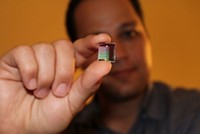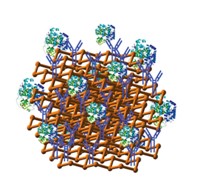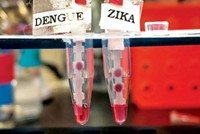Advertisement
Grab your lab coat. Let's get started
Welcome!
Welcome!
Create an account below to get 6 C&EN articles per month, receive newsletters and more - all free.
It seems this is your first time logging in online. Please enter the following information to continue.
As an ACS member you automatically get access to this site. All we need is few more details to create your reading experience.
Not you? Sign in with a different account.
Not you? Sign in with a different account.
ERROR 1
ERROR 1
ERROR 2
ERROR 2
ERROR 2
ERROR 2
ERROR 2
Password and Confirm password must match.
If you have an ACS member number, please enter it here so we can link this account to your membership. (optional)
ERROR 2
ACS values your privacy. By submitting your information, you are gaining access to C&EN and subscribing to our weekly newsletter. We use the information you provide to make your reading experience better, and we will never sell your data to third party members.
Analytical Chemistry
Biosensor Detects Parasite Infection
Global Health: Simple electronic chip could help diagnose neglected diseases in remote areas
by Sarah Webb
November 11, 2010

In remote locations in the developing world, detection and treatment of many infectious diseases requires cheap, easy-to-use diagnostic tests. To help meet the need, Brazilian researchers have developed a simple electrical sensor to detect antibodies for a pathogen in blood. Now they have shown that their biosensor can distinguish between mice infected with two human pathogens that have confounded other diagnostic systems (Anal. Chem., DOI: 10.1021/ac101920t).
In tropical regions of Latin America, Africa, and South Asia, according to the World Health Organization, about 12 million people suffer from Leishmaniasis, a disease that causes skin ulcers in its cutaneous form and is fatal in other forms. Blood-sucking sand flies of the genus Phlebotomus carry Leishmania amazonensis, one of the single-cell parasites that cause the disease.
Detecting the infection can be tricky, says Valtencir Zucolotto of the University of São Paolo. Antibody concentrations can be low. An additional problem is that antibodies for Trypanosoma cruzi, the organism that causes Chagas disease, can produce false positive results for Leishmaniasis in standard antibody-based tests, such as enzyme-linked immunosorbent assays.
In 2007, Zucolotto and his colleagues had developed electronic biosensors to detect low levels of antibody to Pasteurella multocida , a bacterium that causes disease in mammals. They thought that the method's greater sensitivity could overcome the Leishmaniasis-Chagas false positive problem
The sensor is a postage-stamp-sized glass slide with interlocking 10-µm-wide metal walls spaced 10 µm apart to create tiny channels. Gold electrodes line the walls of the channels. The scientists coat the electrodes with antigens from a specific pathogen. When they hook the chip up to a power source, the channels act like tiny capacitors, storing electrical energy in the gap between the electrodes. But when the scientists dip the chip into a solution that contains antibodies for the pathogen, those proteins bind to the antigen coating and slightly change the capacitance of the channels.
When the team tested their device with L. amazonensis antigens, they found that they could clearly differentiate between serums from mice infected by this parasite and serums from those sickened by T. cruzi, even at antibody concentrations as low as 10 ng/mL, similar to concentrations produced in the non-lethal, cutaneous form of the disease. And the biosensors are cheap: The chips cost about $1 each and the electronics to measure capacitance cost $50, Zucolotto estimates.
The technology is interesting, but the researchers still need to show that the technique will work to diagnose disease in humans, says Philippe Büscher of the Institute of Tropical Medicine in Antwerp, Belgium. First, he says, the researchers must test the biosensor with infected human serum, an experiment that the Brazilian team is already planning. Büscher also thinks that the team should develop sensors for other diseases, such as Chagas, which does not always create observable symptoms but can be lethal. Meanwhile, he adds, the cutaneous form of leishmaniasis is non-lethal, and a simple skin test for it already exists.





Join the conversation
Contact the reporter
Submit a Letter to the Editor for publication
Engage with us on Twitter